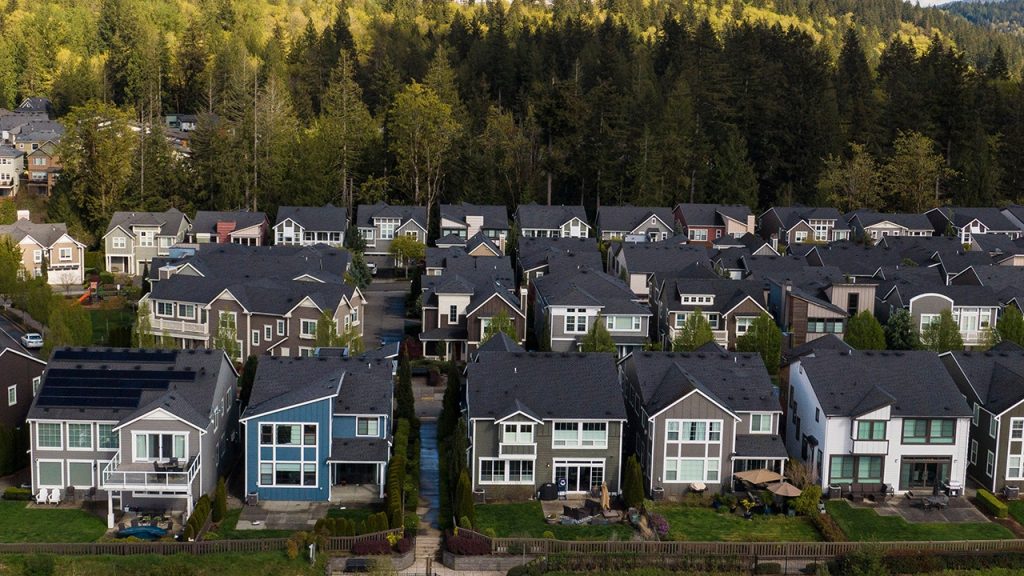A small group of Americans who took out cheaper but riskier mortgages several years ago are about to see their monthly payments skyrocket.
Since 2019, more than 1.7 million homes have been bought using adjustable rate mortgages (ARMs), which initially offer a lower, more affordable interest rate than their fixed-rate counterparts. But eventually, ARMs reset to an unknown future rate, meaning there is a high degree of uncertainty for individuals who take on these types of loans.
About 330,000 homeowners who got an ARM in 2019 have already seen their five-year, fixed-rate term end, and another 100,000 will see their rates adjusted this year, according to ICE Mortgage Technology.
With mortgage rates settling near the highest level in two decades, the reset could cause monthly payments to surge for many homeowners.
“Interest rates went up at the fastest pace in 40 years, so buckle your seat belt,” Greg McBride, chief financial analyst at Bankrate, told FOX Business.
BUYERS ARE TAKING ON RISKIER ADJUSTABLE RATE MORTGAGES AS AFFORDABILITY WORSENS
Homeowners who took out an ARM a few years ago did so when rates were substantially lower than they are today.
In 2019, the average rate on a five-year ARM was 3.9%, compared to the 30-year fixed rate of 4.45%, according to Point, a home equity investment platform.
Assuming an individual purchased a median-valued $313,000 home, put down a 20% deposit five years ago and taken out a five-year ARM, their monthly payments would be about $1,181 through January 2024. By comparison, if that individual had taken out a 30-year, fixed-rate mortgage, they would owe about $1,261 each month — $80 more, or about $4,815 over the five-year period.
“In taking or keeping that adjustable rate mortgage, they bypassed the lowest fixed mortgage rates in history,” McBride said.
Now, however, ARM rates are hovering around 6.5%, according to a Bankrate database, nearly double the rate five years ago. Under that new rate, the monthly payment would surge to about $1,582, according to FOX Business calculations.
US HOUSE SELLERS ARE CUTTING PRICES FOR THE FIRST TIME IN OVER A YEAR

“Compared to having taken out a fixed-rate mortgage five years ago, the ARM’s higher monthly payments after the fixed-rate period ends means that this homeowner will have paid more on a cumulative basis by the time they’re seven years into their mortgage, with another 23 years of potentially higher payments to go,” the Point study said.
Homeowners have some options, including refinancing if interest rates fall or even selling their home “if they’re a little out over their skies,” McBride said.
“The [30-year fixed mortgage] may not be the optimal loan in every case, but it is your best gauge of affordability,” he added. “And so if you find yourself looking at other loan products because that 30-year fixed isn’t affordable, that’s a bit of a red flag.”
Mortgage buyer Freddie Mac said Thursday that the average rate on a 30-year loan this week rose to 7.03% from 6.94%. While that is down from a peak of 7.79% in the fall, it remains sharply higher than the pandemic-era lows of just 3%.
Even just a minor change in rates can affect how much would-be homebuyers pay each month.
A recent study by LendingTree compared the average monthly payments on 30-year fixed-rate mortgages in April 2022 — when the rate hovered around 3.79% — and one year later, when rates jumped to 5.25%.
It found that higher rates cost borrowers hundreds more each month and potentially added as much as $75,000 over the lifetime of the 30-year loan.
Read the full article here





